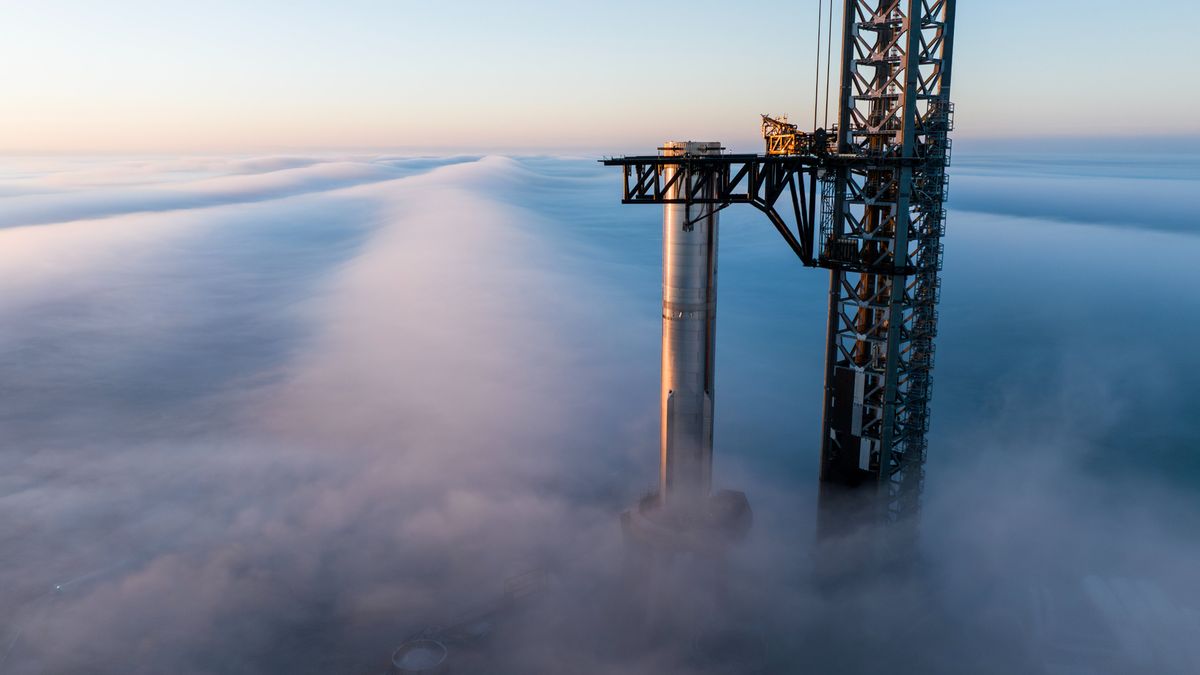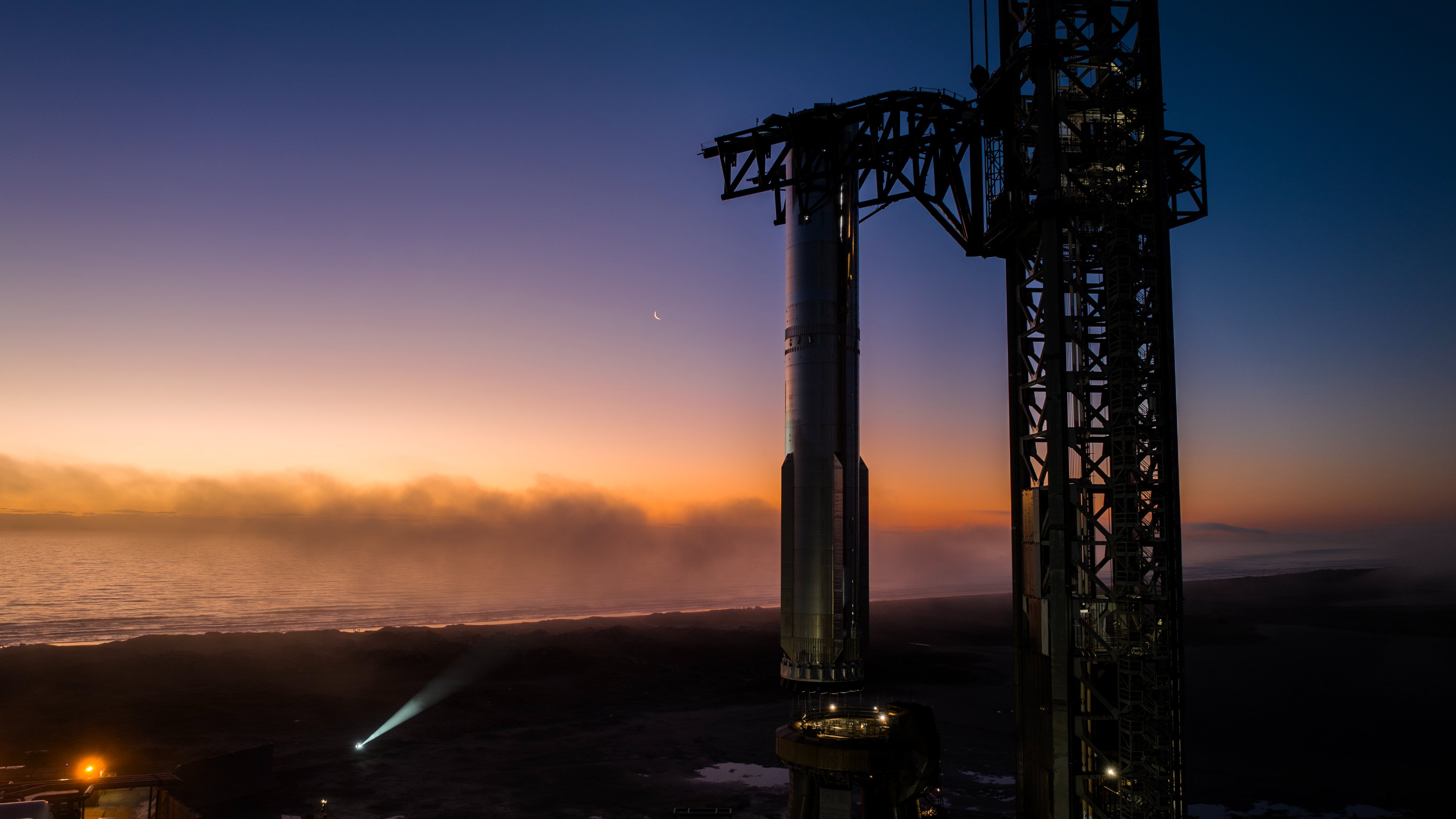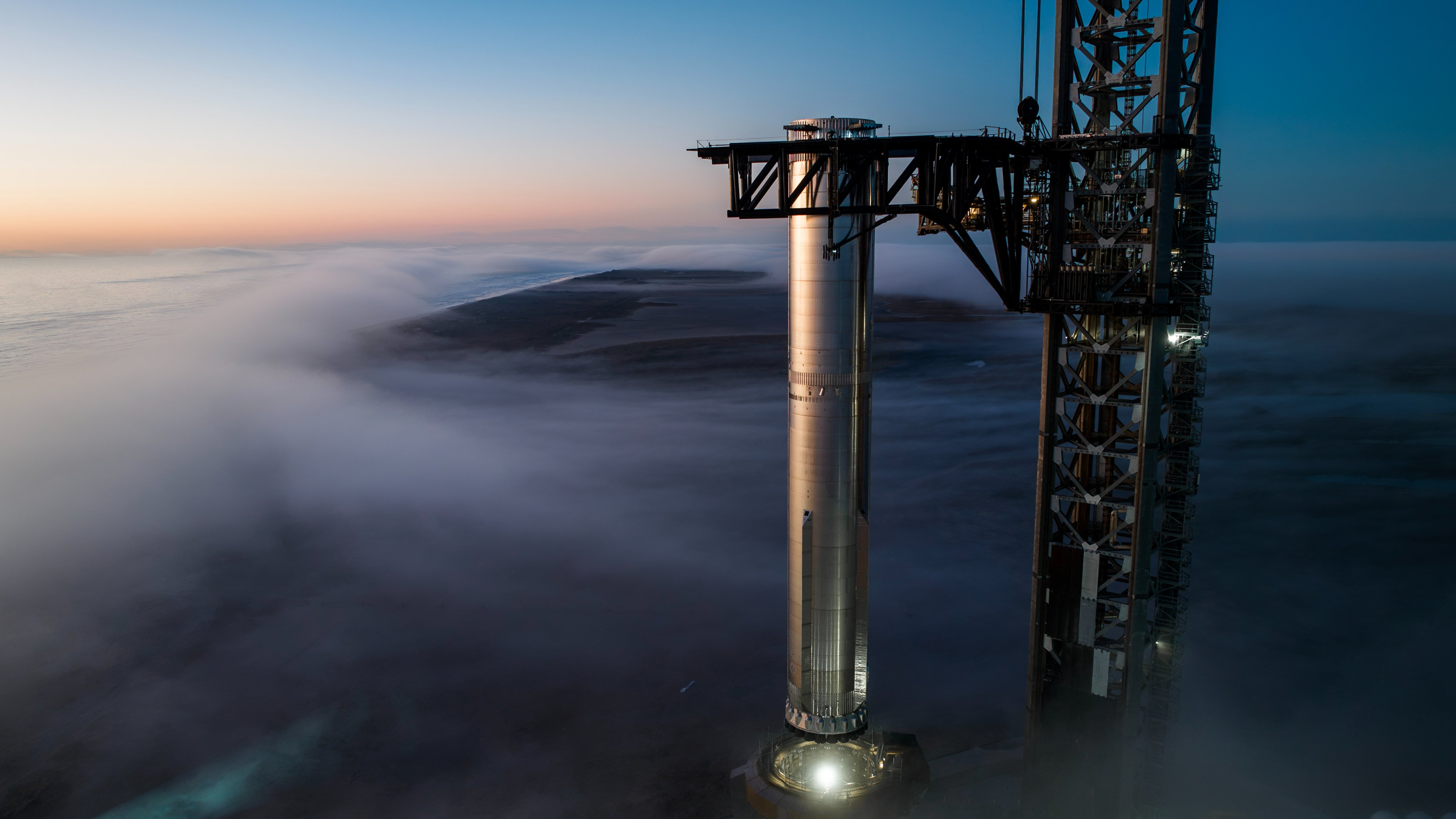
The Starship hardware has successfully arrived at the launch pad in anticipation of a liftoff scheduled for this week.
SpaceX shared images on X today (Feb. 25) displaying the Super Heavy booster, the massive first stage of its Starship megarocket, being positioned onto the orbital launch platform at Starbase in South Texas.
This key development keeps the company on schedule for the eighth Starship test flight, expected to take place this Friday (Feb. 28).

SpaceX is advancing the Starship program, the largest and most potent rocket ever designed, with the aim of aiding humanity in establishing a presence on the Moon and exploring Mars, among other space exploration objectives.
This impressive 403.5-foot-tall (123 meters) vehicle consists of two stages, both of which are fully reusable: the Super Heavy booster and the upper-stage spacecraft known as Starship, often referred to simply as Ship.
To date, Starship has completed seven flights, with the latest occurring on January 16. This mission revealed mixed results; while SpaceX successfully captured Super Heavy with the “chopstick” arms of the launch tower about seven minutes post-liftoff as planned, the Ship encountered a major issue and ultimately exploded over the Atlantic Ocean.
SpaceX has recently concluded its investigation into the anomaly, determining that the explosion stemmed from unexpectedly high stresses on Ship’s propulsion system during the mission. These stresses led to a propellant leak, which caused engine failures and subsequently activated the vehicle’s autonomous safety system.

Flight 8’s objectives are expected to mirror those of Flight 7, according to SpaceX. The company will aim to perform another catch of Super Heavy using the chopsticks mechanism, while Ship will also attempt to deploy four dummy Starlink satellites on a suborbital path. (During Flight 7, the vehicle was loaded with 10 mock Starlinks but did not have the opportunity to deploy any.)
If everything goes as planned, Ship is expected to splash down in the Indian Ocean near the coast of Western Australia approximately 66 minutes post-launch.









